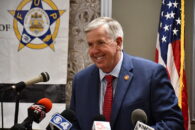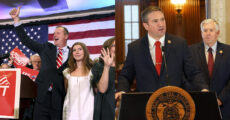Staff Reports
Jefferson City, MO – As Jay Nixon’s administration embarks on its second term, four years already in the books provide ample insight into which figures are most influential in its operation. Constituted of individuals within his state government apparatus and those on the outside, this list gives a glimpse into who wields the most power in a notoriously insular and closely-held regime. If you have an opening for lunch getting one of these decision makers to meet with you would be a good thing.
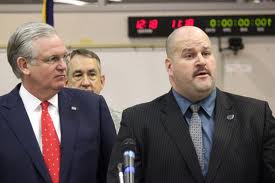
20. Chris Pickering – Nixon’s current Homeland Security Coordinator, Pickering previously served the governor as inspector general in the Dept. of Corrections and worked for him as an investigator during the Attorney General years. A shorn-headed, mustached hill of a man, Pickering looks very much the cop’s cop. Nixon has often deployed him that way, using Pickering’s detective skills to seek truths about what goes on in his government beyond that which the governor himself can see.
19. Julie Gibson – As Director of Workforce Development, Gibson is in a key position for Nixon, as the charge for her office overlaps significantly with his top desired messages around job training and economic recovery. How crucial is Gibson? Consider how many of the initiatives which Nixon has traveled extensively to tout come directly out of Gibson’s shop: the Next-Generation Summer Jobs Program, the State Park Youth Corps and Show-Me Heroes, just to name a few. A former gubernatorial chief of staff herself, Gibson knows how to build a program that works and sells.
18. David Farr – CEO of Emerson Electric, Farr is one of the business executives whom Nixon –and his top brass—most admire personally. Beyond being deferential to Farr because he’s a financially successful businessman at a multi-billion dollar home-state conglomerate, the administration even heeded his policy direction, altering some of its economic development agenda to reflect a focus on rewarding existing in-state businesses rather than on attracting new firms from
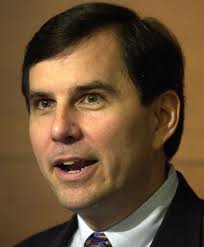
elsewhere in the nation.
17. Jack Cardetti – Former gubernatorial mouthpiece, Cardetti, even after departing the second floor in 2010, remains an essential component of Nixon’s communications and public relations program. Cardetti is not only a key hand in managing some Nixon campaign-side communications but also navigates choppy political waters for Nixon by handling sensitive third-party policy or public affairs matters that need the Governor’s silent imprimatur but which can’t have his fingerprints.
16. Dave Murphy – Seen a photo or a TV news story (or fifty) over the last four years of Gov. Nixon in camouflage with rifle in hand or doing a fly-around to promote deer-meat donation by hunters? If not, you haven’t been watching. And Nixon wouldn’t have been in any of those photos if not for Dave Murphy, head of the Conservation Federation of Missouri. Outdoor endeavors have become one of the pillars of the Nixon public persona and Murphy is his main connection to the conservation and sporting communities.
15. Georganne Nixon – The only person close to the crown who’ll ever ask or care, “What will the neighbors think?” The First Lady bears direct responsibility for helping transitioning Nixon from an Attorney General who liked to mix things up with a pointed quote to a governor who seeks the refuge of safe language almost all the time.
14. Steve Stogel – St. Louis developer Steve Stogel, as a co-chair of Nixon’s hand-picked Tax Credit Review Commission, is an invaluable buffer between Nixon and friendly funder constituencies who view the governor’s appetite for any reduction in tax credits as heretical. With Stogel running plays, Nixon gets some cover if reform happens (i.e., “even Stogel, himself a developer who benefits from these credits, endorses the need for reform…”) and some distance if the commission’s efforts fall on deaf ears in the legislature.
13. Joe Dandurand – A team that ran the state’s chief law enforcement office for more than a decade and a half finds it hard to turn loose of the power that office
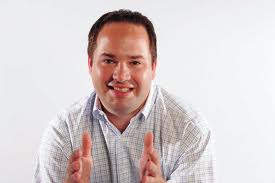
wields. And with former Western District Court of Appeals Judge Joe Dandurand sitting high atop Chris Koster’s bureaucracy, Nixon has an asset and ally who allows him to stay plugged into the workings of Koster’s shop.
12. Richard McIntosh – The only lobbyist in the Top 20, McIntosh is positioned perfectly to both make value for and gain value from the administration. McIntosh, another former aide to Nixon in the Attorney General’s office, has both brought his big clients to the table as campaign backers and been administration’s go-to guy inside the building on issues they can’t touch directly. It was McIntosh whom Nixon’s team called upon to help sink local control of the St. Louis Police Department when legislation appeared to be moving in 2010.
11. Norm Siegel – Trial attorneys have always been and remain a key constituency, if not the key constituency, for Jay Nixon. And in that community there are many who are influential with the governor. But Siegel, a youngish and aggressive Kansas City comer, is a player in whom Nixon places great confidence, not just for his willingness to bring campaign cash, but for his ready commitment of time and expertise to key political projects.
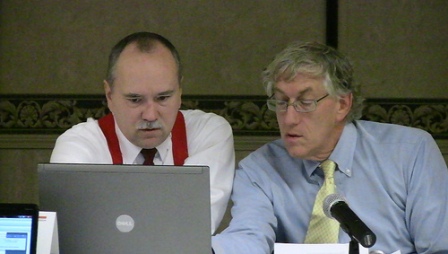
10. Margaret Onken – No one’s ascendancy in her own field during the Nixon years has been more pronounced than Onken’s. As Nixon’s chief fundraiser during his time as Attorney General, many viewed Onken as having capped out her potential and suggested someone else would have to guide Nixon to the cash necessary to take the next step. The doubters were wrong. With two Nixon victories, won handily and with impressive financial hauls, Onken has asserted herself as a force and a key adviser on what, if anything, Nixon can and will do next.
9. Andrea Spillars – Perhaps the least familiar name on this list, her lack of profile may be one of the reasons she has so much value to Nixon and his administration. Though technically a deputy director at the Department of Public Safety, Spillars has essentially run that department from the day Nixon was sworn. A petite woman with a serious, unflappable demeanor, Spillars exudes confidence, competence and a sense that she’s thought through every possibility. If there’s one piece of Nixon’s profile about which he’s incredibly protective, it’s his status as an on-top-of-things presence on the natural disaster front. So it’s telling to remember who he put in charge of keeping straight some of the most sensitive elements of the response to the biggest disaster of his term, the Joplin tornado. He sent Andrea Spillars to bring order to the chaos.
8. Mike Nietzel – Back when higher education policy was a focal point of Nixon’s agenda and a prominent bullet in his standard remarks, he found in Nietzel an
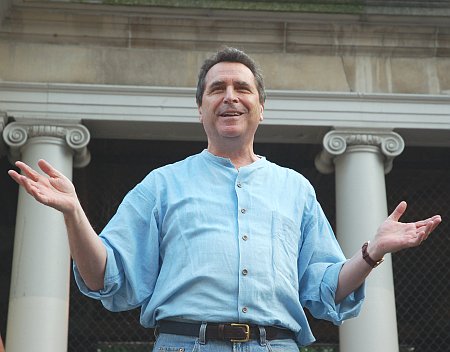
advocate within the university community who he could count on as a third-party verifier for all his plans. When Nietzel left his job as President of Missouri State University, Nixon brought him into the fold as an official adviser. From that perch, he persists as a key sounding board for Nixon’s ideas and as an advance courier for running these ideas through prospective extra-governmental partners.
7. Ken Morley – The manager and architect of Nixon’s 2008 gubernatorial victory, Morley provided a template for campaign success and a frame through which Nixon could project himself during a first term as a means for assuring a second term. Both components worked. Though a more distant figure in the second run than the day-to-day presence he provided during the first, Morley remains an important strategic voice as Nixon shapes his second-term agenda and considers how to position himself for post-gubernatorial life.
6. G.M. Ford – No, this is not actually the name of a person. But rest assured, if you are an American automotive executive, it doesn’t matter whether GM or Ford or Chrysler appear on your card, you are a highly influential figure in the Nixon administration. The bold typeface victories on jobs in the Nixon administration –and jobs are the most important of the administration’s priorities — have come from the automotive industry. And even the near-misses have come after dalliances with Detroit. No one can get Nixon on the phone quicker than the car guys who say they’re thinking about a deal in Missouri.
5. Tom Green – Apart from reliably being a top money-man for Nixon’s campaigns, Green serves as a high-level connector to constituencies in which he might have limited entry. Be it the banking and finance sector, St. Louis society or the Missouri Jewish community, Green is the ultimate bridge between important Democratic elements and a guy who’s just 20 years removed from being a state senator from Jefferson County. Green is an irreplaceable ally and confidant to the governor.
4. Jeff Harris – As Policy Director to Nixon, Harris is a primary sculptor of the governor’s broad policy directives as they are assembled, vetted and pushed
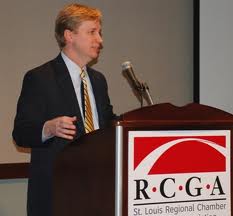
forward. He is a tireless interrogator of agency officials in search of points he knows Nixon will seize on or reject. By sheer measure of how much time Harris spends deliberating with the governor on key issues of the day or session he possesses remarkable influence. Even so, he is positioned to move even higher on this list, should the chief of staff position become vacant during the second term, as he’s viewed by many as the heir apparent.
3. Doug Nelson – The administration’s pack mule. If there’s something laborious or grave which the Nixon gang must deal with, Nelson is ordinarily the man into whose portfolio it gets dropped. Now acting Office of Administration Commissioner and formerly Deputy Chief of Staff to the governor, is a longtime aide dating back through the Attorney General years and in whom Nixon has the utmost confidence. What’s more, Nelson has additional value as he is generally regarded as the only top Nixon lieutenant with whom individuals and organizations from outside the inner circle actually like working. Nelson has been shuffled around a great deal already, and probably will be again, but he’ll always be in a position of the utmost importance in the Nixon administration.
2A. Ted Ardini – Counsel to the Governor. Formerly Counsel to the Attorney General. Nixon has said of Ardini that he’s the only one in the administration in a position in which he can never, ever afford to be wrong. In the innermost of Nixon’s inner circle, Ardini knows where all the pitfalls lay, understands where old deals are buried and keeps the governor closely apprised of where the sidelines are. Ardini doesn’t view himself as a persuader, but sometimes getting permission, or not getting it, is all the persuasion a governor needs.
2. Linda Luebbering – As budget director for Nixon’s administration, Luebbering has been saddled since 2009 with the biggest challenge facing the governor:
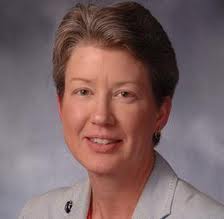
how to manage a budget with historically challenging levels of revenue alongside a legislature that is disinclined to help. In guiding Nixon through his range of choices on cost-saving, it is indisputable that Missouri’s state-funded programs, from health care to K-12 education, have been remade –sometimes substantially– by Luebbering and her staff. While that’s always true of a budget director, the confluence of the economic lull and the importance which Nixon has given budget-consciousness in his own political narrative combine to elevate Luebbering to the extreme heights of importance and influence in Nixon-world.
1. John Watson – Smart, wily, Machiavellian and inscrutable, John Watson is among the most difficult figures in the Nixon administration to decipher. But while putting a finger on the man himself is nearly impossible, assessing his relevance to the Nixon regime is simple. No one is more important. In fact, Watson is so integral to the Nixon governmental machine that it’s impossible to judge how that operation would change if he weren’t there. Or, to put it another way, it is a supreme challenge to imagine Nixon as we know him without John Watson at his right hand. Watson is involved in a meaningful way in all of the critical day-to-day operations. Not just regulating traffic and managing personalities, Watson has an active voice in the schedule, the particulars of the day’s press, agency staffing and policy nuance. Already an impressive four years into a stint in one of the most intense, grinding posts in all of Missouri, it is remarkable that Watson has remained in his spot at the pinnacle of influence. Maintaining that throughout a second term would be a feat for the decades.
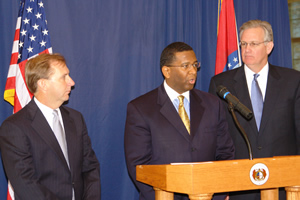
Falling Off the List…
Dan Mehan – A prime cheerleader for many of Nixon’s first term initiatives, Mehan would still be on the list, but for his Missouri Chamber’s puzzling endorsement of Dave Spence. After working so closely with Nixon it’s hard to understand why he would not support him in an easy race to predict Nixon winning. It would also have given the Chamber a chance to show some bipartisanship by supporting and democrat governor who was very reasonable to the business interests in Missouri.
Steve Tilley – Tilley, as was his pattern, worked behind the scenes cooperatively with Nixon’s team and communicated with them well. He falls off by virtue of his exit from the House.
Victor Callahan – Easily Nixon’s best ally in the legislature over the last four years. Could be counted on to run Nixon’s plays. They will miss him.
Rising, but just a cut below…
Peter Lyskowski – Like Doug Nelson, another Nixon loyalist and workhorse deployed to many different posts due to the governor’s high comfort level with him.
Chris Pieper – Currently the acting Director of Economic Development, super smart, spotlight-shunning attorney has also done stints in key roles at Revenue and in the governor’s office. One can imagine Nixon putting him in just about any spot.
Seth Bundy – Toiling in the Nixon communications shop, Bundy has worked for another governor (in Kansas) and has made his way quickly to the second floor from the press role in another agency.

